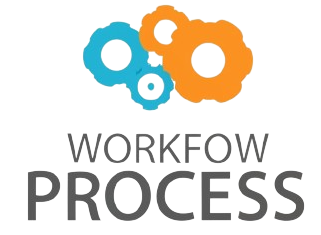AI governance frameworks play a critical role in the safe and ethical deployment of agentic AI systems—those capable of autonomous decision-making and actions. As AI technologies become increasingly sophisticated, their potential impact on society, economy, and security grows significantly. Without comprehensive governance, risks such as unintended biases, ethical violations, privacy breaches, and loss of human oversight may arise. This article explores the essential elements of AI governance frameworks designed to manage these challenges effectively. It highlights how regulations, ethical guidelines, stakeholder collaboration, and continuous monitoring converge to ensure agentic AI operates safely, transparently, and in alignment with human values. Understanding these frameworks is vital for policymakers, developers, and organizations aiming to foster trust and responsibility in AI deployment.
The need for robust AI governance in agentic systems
Agentic AI systems differ from traditional AI in their ability to make independent decisions and take autonomous actions. This heightened autonomy increases their complexity and the risks they pose, such as unpredictable behaviors or amplifying systemic biases. As a result, traditional regulatory and oversight models are often insufficient. Robust governance frameworks must address not only technical safety but also ethical considerations and social implications.
Key drivers behind building strong governance include:
- Accountability: Ensuring developers and deployers can be held responsible for AI actions.
- Transparency: Making AI decision processes understandable to users and regulators.
- Risk mitigation: Identifying and managing potential harms before they materialize.
- Alignment: Guaranteeing AI objectives remain consistent with human values and norms.
Core components of effective AI governance frameworks
Effective governance frameworks share several foundational components that collectively promote responsible AI deployment. These include:
- Policy and regulations: Clear laws and guidelines define acceptable AI behaviors and enforce compliance.
- Ethical standards: Principles such as fairness, privacy, and beneficence guide AI development and use.
- Technical standards and audits: Independent testing and validation processes that verify reliability and safety.
- Stakeholder engagement: Inclusion of diverse perspectives, including affected communities, developers, and regulators.
- Continuous monitoring: Real-time oversight mechanisms to detect deviations and enable corrective actions.
Balancing innovation and regulation
One of the biggest challenges in AI governance lies in striking the right balance between enabling innovation and enforcing necessary controls. Overregulation can stifle technological advancements and economic growth, while underregulation risks harmful consequences. Governance frameworks need to be adaptable and scalable, capable of evolving alongside AI technologies.
Innovative approaches include:
- Regulatory sandboxes that allow controlled experimentation.
- Adaptive policies that adjust based on empirical evidence and technological progress.
- Collaborative governance models involving public-private partnerships.
Such approaches encourage responsible innovation while maintaining safeguards against unforeseen risks.
Implementing AI governance: challenges and practical strategies
Implementing AI governance frameworks faces several practical challenges. These include the rapid pace of AI development, diverse stakeholder interests, and global jurisdictional variations. Furthermore, defining measurable criteria for concepts like “fairness” and “accountability” proves complex.
Table 1 below summarizes common challenges alongside strategic responses:
| Challenge | Strategic response |
|---|---|
| Rapid technology evolution | Establish adaptive, iterative governance models supported by ongoing research |
| Global regulatory fragmentation | Promote international cooperation and harmonization of standards |
| Ethical ambiguity | Engage multidisciplinary experts and affected communities in framework design |
| Data privacy concerns | Implement robust data protection protocols and transparency mechanisms |
| Enforcement difficulties | Develop automated audit tools and clear accountability pathways |
By addressing these challenges thoughtfully, organizations can better ensure that agentic AI is deployed responsibly and with societal trust.
Conclusion
Establishing comprehensive AI governance frameworks is essential to managing the unique risks posed by agentic AI systems. These frameworks integrate policy, ethical principles, technical standards, and stakeholder collaboration to ensure AI technologies operate safely and align with human values. Balancing innovation with regulation requires adaptable governance models that evolve alongside AI advancements. Practical implementation demands overcoming challenges such as rapid technology changes, ethical complexity, and jurisdictional differences through strategic, inclusive approaches. Ultimately, effective AI governance not only reduces harmful outcomes but also cultivates public trust and supports the sustainable growth of autonomous AI applications. As AI continues to advance, ongoing commitment to responsible governance will be pivotal in harnessing its benefits while safeguarding society.
